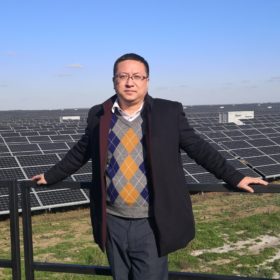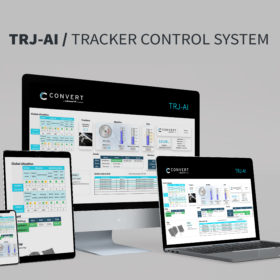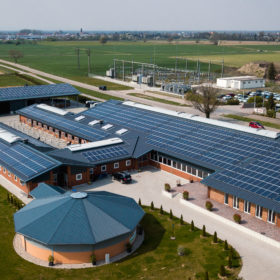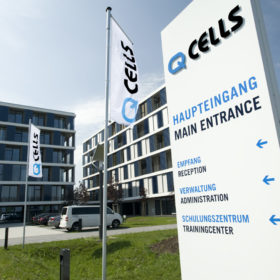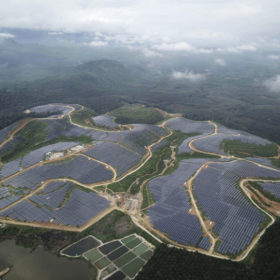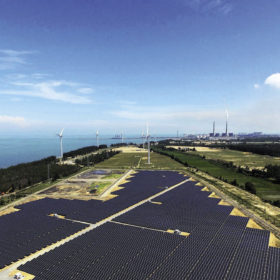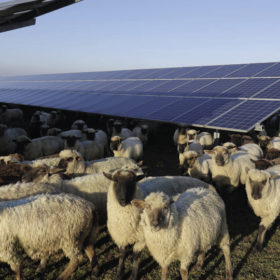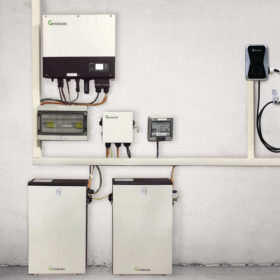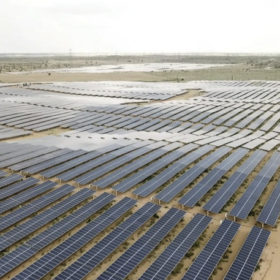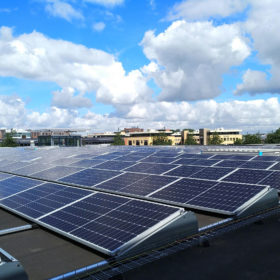Talking solar, energy storage, and inverter trends
Currently producing 10 GW of annual capacity, inverter manufacturer KSTAR says it plans to expand to 15 GW by the end of this year and hopes to double capacity to 30 GW in 2021 after bringing new products to the market. KSTAR vice president, Mr. Ye, talks about solar, storage, and inverters.
Convert launches new PV tracker control system
Solar PV tracking manufacturer, Convert, is launching its TRJ-AI Tracker Control System. The company says its new TRJ-AI innovation provides the industry the opportunity to easily control, manage, and monitor tracking systems from digital devices reliably and remotely to optimize the energy production of solar plants.
Why the era of solar specialization is over: Part II
The global manufacturing footprint of Q CELLS has incrementally expanded over the past few years. Today, the company owns the largest single solar module manufacturing plant in the Western Hemisphere – the 1.7 GW facility in Georgia, USA – and has large-scale cell and module manufacturing facilities in South Korea, China, and Malaysia. With 11.3 GW module capacity, Q CELLS has one of the largest and most flexible module manufacturing footprints in the industry, capable of deftly serving all four corners of the globe wherever and whenever demand arises.
Why the era of solar specialization is over: part I
In this two-part series, Tier-1 solar company Q CELLS takes an in-depth look at how the foundations of the world’s energy infrastructure are being methodically dismantled and upgraded with greener, cleaner and more intelligent solutions, and examines solar’s role – and that of traditional module cell and module manufacturers – in this fascinating transition.
AI steps into maintenance
The Covid-19 pandemic quarantine has introduced a new set of challenges for solar PV operations and maintenance. The topic has gained industry attention now that PV sites lack onsite personnel. Huawei says its new Smart I-V Curve Diagnosis – integrating artificial intelligence, digital technologies, and PV – is a first-step solution toward unmanned O&M. With the levelized cost of energy (LCOE) ever decreasing, improvements in O&M efficiency and accompanying cost reductions may accelerate the arrival of the grid parity era.
Three years of intelligent operations data
In 2016, Huaneng Hainan Power and Huawei jointly digitalized the Dongfang solar power plant in Hainan, China. As the first solar PV project to be digitalized, it is worth taking a look back to see how the new technology has actually bolstered performance.
A dependable PPArtner for subsidy-free PV
The falling cost of PV has increasingly driven the adoption of solar technology in recent years. But for a long time, the solar industry was fully dependent on subsidies. German PV project developer BayWa r.e. made headlines in 2018 with its 175 MW Don Rodrigo plant just outside of Seville, in southern Spain. The company backed the array with a 15-year power purchase agreement (PPA), marking the first time a project of that size had been refinanced in Europe without the help of subsidies. It later charted new territory again with the completion of Germany’s first subsidy-free PV project in 2019.
Linking solar with energy storage and EV technologies
Solar is booming globally and as costs come down and the technology approaches grid-parity, historically based government incentive models and subsidies are changing –particularly for the distributed generation (DG) rooftop market. But new technologies and capabilities of other distributed energy resources (DERs), such as battery energy storage systems, electric vehicles (EVs), and other smart energy technologies, are stepping into position for a net-zero energy future – providing opportunity to advance beyond the power structures of the past.
Moving from grid- following to grid-supporting
Solar PV generation is one of the world’s most promising technologies for a sustainable energy future. However, as solar and other intermittent renewable energy sources increasingly enter the grid, the establishment of grid connections has become a challenge that could threaten future expansion. Now, solar PV technology is rapidly moving from a passive role to an active one, as it takes on a starring role to support electric utility power grids.
Local knowledge, global growth
Through its key regional partner Omnisun Srl, Growatt has offered its products to the Italian market since 2012 – making it one of the first Chinese inverter brands operating in the country. pv magazine caught up with Omnisun’s chief technology officer, Giovanni Marino, to discuss Covid-19, reliable partners, new energy technologies, and his expectations for the Italian PV market.
